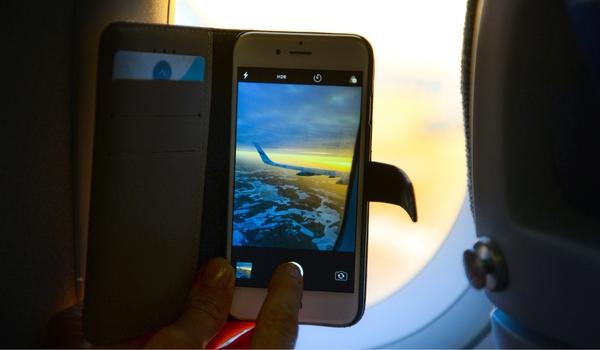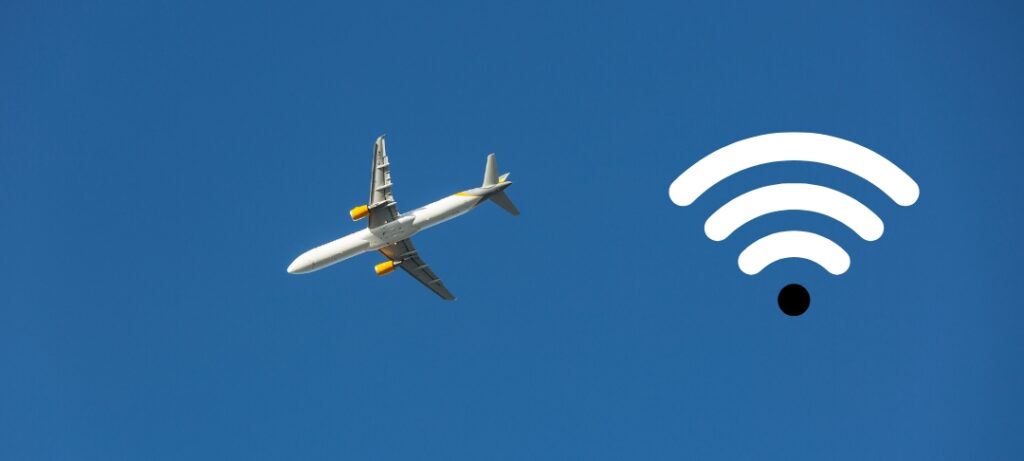In-flight WiFi has become increasingly prevalent in recent years, with more and more airlines offering this service to their passengers. But is it available on all flights? How does it work? How much does it cost? These are some of the questions that this blog post aims to answer. Through this post, we will take a comprehensive look at the history, availability, cost, quality, safety, entertainment, future, and impact of in-flight WiFi. We will also provide tips on how to access in-flight WiFi and troubleshoot common issues.
History of in-flight connectivity
Timeline of in-flight WiFi availability In-flight connectivity has come a long way over the years. In the early days of commercial aviation, the only way for passengers to communicate with the outside world was via air-to-ground telephone service, which was both expensive and unreliable. In the 1980s and 1990s, the first in-flight entertainment systems were introduced, but these were limited to a small selection of movies and television shows. With the advent of WiFi technology in the late 1990s, the possibility of in-flight internet access became a reality. In 2000, Boeing announced its Connexion by Boeing service, which offered high-speed internet access via a satellite connection. However, this service was not widely adopted and was eventually discontinued in 2006. In the following years, several airlines started experimenting with air-to-ground systems, which use cellular networks to provide internet access. These systems were more cost-effective than satellite-based systems, but the coverage and speed were limited. In recent years, we have seen a rise in hybrid systems that combine satellite and air-to-ground connectivity, providing more comprehensive coverage and faster speeds. As of now, most major airlines in the world offer some form of in-flight WiFi, with the availability and quality varying depending on the airline and route.
Types of in-flight WiFi
There are three main types of in-flight WiFi systems: satellite-based, air-to-ground, and hybrid. Satellite-based systems, as the name suggests, use satellites to provide internet access. These systems offer the widest coverage, as they can work over oceans and remote areas where there is no cellular network. However, they are also the most expensive to install and maintain. Air-to-ground systems, on the other hand, use cellular networks to provide internet access. These systems are generally less expensive than satellite-based systems, but the coverage is limited to populated areas and can be affected by weather conditions. Hybrid systems combine the advantages of both satellite and air-to-ground systems. They use a combination of satellites and cellular networks to provide internet access, resulting in more comprehensive coverage and faster speeds.
In-flight WiFi availability by airline
In-flight WiFi availability varies widely among airlines. Some airlines, such as Delta, United, and American, offer WiFi on almost all of their flights, while others, such as Southwest, offer it on a limited number of flights. Among the major international airlines, most of them offer WiFi on their long-haul flights, but availability on short-haul flights can vary. When comparing in-flight WiFi options among airlines, it is important to consider not only the availability, but also the type of system used, the cost, and the quality. For example, some airlines use satellite-based systems, which offer the widest coverage, but can be more expensive for passengers. Other airlines use air-to-ground systems, which are generally less expensive, but the coverage and speed may be limited. Additionally, some airlines offer free WiFi for a limited amount of time or for certain plans, while others charge for all access.
Cost of in-flight WiFi
The cost of in-flight WiFi can vary widely among airlines and depending on the type of access plan you choose. Some airlines offer free WiFi for a limited amount of time or for certain plans, while others charge for all access. Many airlines offer different pricing tiers, with options for hourly, daily, or monthly access. Prices can range from $5-20 for a short flight to $30-50 for a long-haul flight. Some airlines also offer discounts for frequent flyers or members of their loyalty program. In addition to these prices, it is also important to note that some airlines might have additional fees for certain services or features, such as streaming video or VPN access.
Quality of in-flight WiFi
The quality of in-flight WiFi can depend on various factors, such as the type of system used, the number of users connected at the same time, and the altitude and location of the flight. In general, satellite-based systems tend to offer faster speeds and more stable connections than air-to-ground systems. However, the quality of in-flight WiFi can also be affected by factors such as weather conditions and the number of users connected at the same time. When comparing the quality of in-flight WiFi among airlines, it is important to look at factors such as the type of system used, the average speeds offered, and customer reviews.
In-flight WiFi and safety
The use of electronic devices on airplanes, including the use of in-flight WiFi, has raised concerns about a possible interference with the aircraft’s navigation and communication systems. However, extensive testing and research have shown that these concerns are largely unfounded. To ensure safety, airlines and regulatory bodies have put in place strict guidelines for the use of electronic devices on airplanes. These guidelines specify which devices can be used during different phases of flight and at what power levels. Additionally, many airlines have implemented measures to prevent overloading of the in-flight WiFi system, which could cause interference.
In-flight WiFi and entertainment
In-flight WiFi can also enhance the entertainment options available to passengers. With internet access, passengers can stream movies and television shows, access online music, and play games. Many airlines now offer complimentary or paid streaming services. When comparing the entertainment options available among airlines, it is important to consider not only the variety of options, but also the quality of the streaming service, and the availability of power outlets and USB ports for charging devices.
Future of in-flight WiFi
The future of in-flight WiFi looks promising with new advancements in technology such as 5G networks and satellite-based systems with higher speeds and lower latency. These advancements will lead to even faster and more reliable in-flight internet access, with the potential to support more applications and services.
In addition to improvements in technology, the future of in-flight WiFi could also see a shift towards more personalization and customization. Passengers may have the ability to tailor their in-flight experience, such as choosing different levels of access and services based on their needs and preferences.
Furthermore, the future of in-flight WiFi could also see greater integration with other technologies such as virtual and augmented reality. This could lead to the development of new forms of in-flight entertainment and the creation of more immersive travel experiences.
Impact of in-flight WiFi on the airline industry

In-flight WiFi has had a significant impact on the airline industry by providing passengers with more options and amenities, which has helped to improve customer satisfaction and loyalty. With in-flight WiFi, airlines can offer passengers the ability to stay connected with their loved ones, work, and entertain themselves during the flight. Additionally, the availability of in-flight WiFi has also led to an increase in the use of personal electronic devices on airplanes, which has had a positive impact on the airline industry by reducing the need for traditional in-flight entertainment systems. In the future, the impact of in-flight WiFi on the airline industry is likely to continue to grow, as advancements in technology and a greater focus on personalization and customization are expected to lead to even more options and amenities for passengers.
How to access in-flight WiFi
Connecting to in-flight WiFi can vary depending on the airline and the type of device you are using. In general, the process involves turning on your device’s WiFi and selecting the in-flight WiFi network from the list of available networks. Once connected, you will be prompted to enter your credentials or purchase a plan. It is important to note that some airlines offer free access for a limited time or for certain plans, while others charge for all access. If you are having trouble connecting to in-flight WiFi or experiencing slow speeds, some common troubleshooting steps include turning off your device’s cellular data, restarting your device, and trying to connect again later when there are fewer users connected.
Conclusion
In-flight WiFi has become an increasingly important amenity for passengers, and its availability and quality can vary widely among airlines. Through this blog post, we have taken a comprehensive look at the history, availability, cost, quality, safety, entertainment, future, and impact of in-flight WiFi. We have also provided tips on how to access in-flight WiFi and troubleshoot common issues. It is clear that in-flight WiFi has had a significant impact on the airline industry, and its importance is likely to continue to grow in the future. As technology continues to evolve and improve, passengers can look forward to even faster and more reliable in-flight internet access, with more options and amenities.
